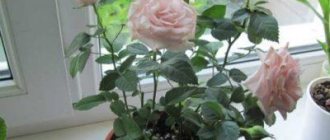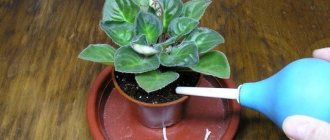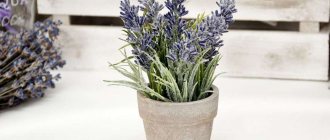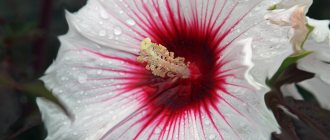The popularity of bush roses for home growing is growing every day. The flower is not so demanding on care, it can take root almost anywhere, as long as there is sufficient sunlight and a timely supply of moisture and nutrients. The bush rose is an ideal ornamental plant that will complement your home collection of violets, azaleas and impatiens.
Despite the fact that amateur gardeners have virtually no complaints about the garden bush rose, at home such a simple but incredibly beautiful plant behaves a little differently. In this case, it would be inappropriate to use your knowledge in caring for a garden rose - only a number of requirements in home and garden cultivation will coincide.
What to do when the rose doesn't bloom
The most common question from beginning gardeners is why the tea rose does not bloom. There are several answers to this:
- Not enough light. If the windows face the non-sunny side, you will have to provide the plant with additional lighting. For this, it is recommended to use special phytolamps.
- Unsuitable indoor climate. Roses stop blooming in rooms with low air humidity. Installing a humidifier will help solve the problem. If it is not possible to purchase a device, open containers with water are placed next to the plant. Regularly spraying the bush with warm water will also help.
- Lack of nutrition. If the leaves have lost their rich shade, yellowish spots have appeared between the veins, the rose is probably gnawing. In such a situation, it simply does not have enough nutrients for flowering. You need to feed it with complex fertilizer.
- Excess nutrition. In an attempt to achieve lush flowering, inexperienced gardeners apply too much fertilizer to the soil. As a result, the soil becomes salty. The root system cannot fully extract useful substances from it. Transplanting into fresh soil and establishing a normal fertilizing regime will help solve this problem.
The frequency of flowering of tea roses also depends on the specific variety. Some of them are able to delight with luxurious flowers almost all year round. But generally, a store-bought plant will bloom twice a year.
Feature 4: Flower Shaping
The formation of a rose occurs by pruning. Indoor roses are pruned in spring and autumn:
- In spring, you can remove the top of the rose so that it produces new young shoots.
- The cut top can be placed in water, within 2 - 3 weeks it will give roots and can be planted.
- To form a bush, you can do pruning in the fall, leaving 4 to 5 buds on the branches.
- It is also necessary to remove old yellowed leaves from the rose.
- If you don't prune your rose, it will bloom less profusely.
With good care, rose flowers form every 8 to 10 weeks. In winter, the rose should be left alone and placed in a cold place for the winter.
Helpful Tips:
- To make the rose comfortable, it is necessary to trim off the faded flowers, then it will have the strength to form new buds.
- Timely pruning of faded rose buds will prolong its flowering throughout the year.
- Withered flowers are pruned, shortening the shoots to ten centimeters.
Diseases and pests
Rose often faces diseases and parasite attacks. To cope with them, it is necessary to identify the problem in time.
Leaf spot
This is a fungal infection that causes small dark spots to appear on the leaves. After some time, they acquire a yellow tint and fall off. Yellow roses are more susceptible to this disease.
High humidity is considered a favorable environment for the development of fungi. To avoid problems, you should avoid getting liquid on the leaves. Infected fragments of the bush should be removed. To treat the disease, you should use antifungal soap. Fungicides such as Fundazol or Topsin are also suitable.
Powdery mildew
The plant is covered with a white coating. Young foliage changes shape. Constant temperature fluctuations lead to the development of the disease. Timely removal of the affected fragments and spraying with a fungicidal preparation will help to cope with it.
Rust
This is a fungal infection that causes rust-like stains to appear. Spores are carried by insects and wind. The infected bush should be placed separately from healthy ones and treated with a product containing copper.
Spider mite
The pest attacks the lower part of the leaves. As a result, they turn yellow and die. The appearance of mites is associated with increased dryness in the room. Pests are resistant to most drugs, so dealing with them is very problematic. It is best to carry out preventive measures aimed at moistening the bush and the air.
Aphid
Indoor crops are usually attacked by white aphids. It penetrates the leaves from the soil, with air during ventilation, from animals or people. Parasites infect different parts of the plant and are characterized by rapid reproduction. The leaves curl and the shoots become deformed.
What does a tea rose look like in a pot and why is it called that?
The tea rose is recognized as one of the most beautiful representatives of the Rosanova family. Its flowers have a delicate, discreet shade. The petals form a dense rosette, their edges are wavy, which makes the flower even more decorative. The shape of the bud depends on the specific variety. It can be round or elongated with a pointed end.
A distinctive feature is that after the flower has fully opened, the yellow center becomes visible. And the dark green leaves, located on thin but very strong stems, become a spectacular frame for such beauty.
China is recognized as the birthplace of this flower. There are several versions of why the rose was named tea rose. According to one of them, the flower resembled a bowl, from which it is customary to drink tea in the land of the rising sun. According to another, the aroma of the flower seemed so subtle and delicate to the discoverers that it reminded them of the most exquisite varieties of Chinese tea.
How to replant a home rose?
It is worth replanting the rose to a permanent place only when it has fully recovered. According to the lunar calendar, this is best done when the moon is in its waxing phase
Transplantation must be done very carefully so that not a single main root shoot is damaged. It is advisable not to disturb the earthen ball in which the roots are located.
The earthen lump is only slightly loosened along the outer layer, and a small amount of old earth is also removed. If there are a few fertilizer granules on the coma, then there is no need to remove them.
Next, you should prepare nutritious soil for transplanting the rose into a new pot. This can be the following mixture: turf soil, humus soil and sand (4:4:1). A small amount of complex fertilizer is mixed into the soil. If you don’t have the opportunity to prepare the correct soil for planting, then you can always buy universal soil for indoor plants or house roses.
Rose pot
Further correct cultivation of a home rose requires purchasing the right pot that will suit all parameters. How to choose it?
So, the new rose pot should be larger than the container, a few centimeters in diameter and about 5-7 cm in height. But remember: the pot should not be too large either.
It is worth replanting the rose to a permanent place only at the moment when it has fully recovered
Preparing the pot
If something was grown in a pot before your home rose, then it should be thoroughly washed under warm water using a stiff brush, but without detergents. If the pot is completely new and ceramic, it should be soaked for several hours in warm water.
Before planting, you must properly “equip the new home” of your home rose:
- make drainage from expanded clay,
- make sure there is a drain hole,
- pour the prepared soil with fertilizers into the pot and sprinkle it with a layer of clean soil.
Next, you need to remove the rose from the old pot. To do this, you need to water it abundantly, let it soak for half an hour, turn the pot over and carefully remove the entire plant with a dense earthen lump from it.
Now place it in a new pot, gradually sprinkle the prepared soil around the edges and compact it as it shrinks. After transshipment, the rose should be placed in the shade, or even on a north window.
After a day has passed since transplantation, the rose is placed on a well-lit balcony or windowsill, moved away from drafts and direct exposure to hot sunlight, and provided with constant access to fresh air.
If your home rose dries out, this is the first sign of a lack of moisture, so try to ensure timely watering
How to plant a rose from a pot into the ground. Planting miniature roses in open ground
Planting roses from a pot
After clearing the weeds, the area needs to be dug up, adding a large amount of organic fertilizer. It is best to do this 3-4 weeks before planting.
Before planting, water your rose in a pot, set aside for a while, allowing the water to drain. If the compost or soil the rose is in is too dry, place the pot in a bucket of water and let the soil in the pot soak well. The planting hole should be large enough so that the roots are not squeezed.
Spread out the roots so they don't grow in a spiral in the new location. It is best to fill the hole in several stages, gently trampling the earth after each new portion.
Many small and ground cover roses grow on their own roots, but if the plant has been grafted, the graft site should be 2.5 cm below the soil level. If you receive a seedling without soil and with exposed roots in a dormant state, keep the rose's roots moist until you plant it. If the soil is too wet or frozen, you can dig the bare-root rose into a furrow and cover it with soil to wait for better planting conditions.
Dig a planting hole the same depth as the depth of the pot in which the rose was grown, the width should be twice as wide as the width of the pot.
Loosen the soil at the bottom of the hole using a hand fork, and add a layer of slowly dissolving fertilizer to the bottom.
Fill the dug hole with soil in two or three steps, and after each filling, gently trample it down.
Apply another layer of slowly dissolving fertilizer on top around the root zone, observing the proportions specified by the manufacturer, and dig up the area treated with fertilizers with a pitchfork.
Place the potted plant in the hole you have dug and, placing a stick on the edges of the hole, check that the depth of the hole matches the size of the rose. The stick should barely touch the compost or soil in the pot.
Carefully remove the rose from the pot along with the soil, gently straighten the roots. Place it in the hole, evenly distribute the roots throughout the hole.
Water thoroughly and generously using a watering can with a fine nozzle so that the top layer of soil does not wash away or rise.
Add 5-8cm of organic mulch around the root area to help retain moisture and suppress weed growth.
If you are the author of the photo used in the article, write to us, we will definitely indicate the authorship!
The nuances of caring for roses in a pot at different times of the year
Different seasons of the year require their own approach when organizing the care of indoor plants.
in spring
Spring is the time of new stems and leaves appearing. It is necessary to start actively watering and feeding the plant
It is important to monitor humidity - spray with warm water
With the cessation of frost, the pot should be taken out into fresh air, gradually accustoming it to the sun.
In summer
Summer is a period of regular watering, spraying and removing wilted parts. It's time to feed the soil with mineral fertilizers.
To ensure that the plant reaches the sun evenly, it is recommended to constantly rotate the pot located on the windowsill. As the roots grow, you need to start transplanting the bush into a larger pot.
in autumn
In autumn, temperatures begin to drop noticeably. There comes a time when you need to take the pot home at night or place it on a window on the south side of the house.
After flowering ends, the amount of watering and fertilizing should be reduced. In late autumn, experts advise pruning the bush.
On each shoot you need to leave 5 buds.
Attention! If you do not trim off the old parts, the plant will bloom much later next summer, and the bush will look untidy
in winter
Winter is the time when the rose can rest. Flowering and development stops, and the remaining leaves are lost. Rare watering and spraying are required.
Important! During the heating season, pots should not be placed near radiators or heaters.
Standard rose in the apartment. DIY standard rose
Roses growing in the form of trees have long been decorating European cities. Gradually, this new product came to our open spaces. Today, many gardeners are interested in how to grow a standard rose with their own hands, so popular in aristocratic houses.
Standard roses are not classified as a species - they are not a tree, but a hybrid of a garden rose grafted onto a rosehip rootstock. You can plant almost any type of plant using either bush or standard methods.
The advantages of rose trees include the ability to form unusual bouquets in small areas of the garden, arranging standard, ground cover and bush forms. An important criterion for the popularity of boles is the stability of the roses, as well as the simple care of roses.
Standard roses. Kinds
Since there is no official classification, these trees are conventionally divided into groups depending on the height of the rootstock (excluding the crown):
- Low (dwarf) - trunk height is from 30 to 50 cm. They decorate driveways, garden paths, terraces, balconies. These roses do well in containers.
- Semi-standard - trunk height up to 80 cm. Suitable for small gardens; in the form of tapeworms they decorate closed recreation areas (patios, courtyards).
- Ordinary trunks are trees up to 1.3 m high. For grafting, varieties of hybrid tea or floribunda roses are used.
- High-standard (weeping) - can reach 3 m in height. They give an aristocratic look to the front areas of the site and are planted in large gardens. Climbing varieties of roses are used for grafting.
Varieties of standard rose rootstocks
In modern breeding, three main groups of rootstocks can be distinguished, which are used to form standard roses:
1. The Caninae – the most common section, with conflicting species characteristics:
- Rosa canina is a species used since 1824. On the one hand, the rootstock itself reproduces poorly and grows slowly, but it is long-lived. It is not highly winter-hardy, but hybrid tea roses grown on it tolerate frost well;
- Heinsohn's Record - used in Germany for grafting yellow roses, the advantage is the ability to activate weak-growing scion varieties;
- Pfander's Canina (the most winter-hardy) - works well for almost all varieties of garden roses, except for some yellow varieties of the hybrid tea class.
2. In the section The Synstylae, only two types of rootstocks were selected (Moschata floribunda and Multiflora), which are used for vigorous varieties of roses. They are distinguished by their unpretentiousness, adaptation to poor sandy loam soils, high resistance to disease and cold resistance.
3. The Indicae section is known for the rootstock Odorata 22449. This species is suitable for countries with mild climates, but it is indifferent to both drying out and waterlogging. Almost all varieties of garden roses take root well on it. The later developed subspecies Moore's Odorata is more winter-hardy.
How to grow an outdoor rose in a pot. How to grow a rose from a cut flower in a potato
This simple method is almost a hundred years old; it is suitable specifically for the home; for an industrial greenhouse it would take too much time and energy consumption. It can be grown either from bushes from the dacha in the fall, or from a cut bouquet at any time of the year. There is a lot to help beginning gardeners
Beautiful indoor peach rose
Every glance you take at such a rose, grown with your own hands at home, is an uplifting mood.
What you will need:
- medium sized pots;
- potato tubers;
- bouquet of roses;
- knife;
- large jar;
- drainage pebbles;
- a little sand;
- soil for flowers (any);
- flora restorer.
Roses go well with other flowers
Process:
- We form a pot - put pebbles on the bottom for drainage, a 3-5 cm layer of sand, and fill in some of the soil.
Advice: if you used non-purchased soil, you need to add phytosporin to it to restore the microflora. - We prepare the cuttings as described in the section on cuttings and stick the lower sharp cut into the potato tubers.
Growing roses in potatoes - We place the potatoes along with the cuttings in prepared pots and sprinkle them with earth (drop them in).
- We place it in places with good lighting.
- Many gardeners advise using an ordinary jar as a greenhouse, others argue that potatoes themselves are capable of maintaining the life of a rose stem in the desired condition without the greenhouse effect. Roses grow either way, you can try both options.
- When the stems strengthen and grow, they are planted in pots in the usual manner.
After strengthening the rose stems, they need to be transplanted into pots.
It is no secret that many gardeners grow roses for business and therefore are reluctant to share their secrets, considering everyone to be potential competitors. However, some summer residents who have greenhouses learn the same points from their own experience and willingly share with each other.
Roses in outdoor flowerpots. Growing roses in pots outdoors
Roses in containers in the garden. 4 tips to help you grow roses in pots in your garden. We'll tell you when to replant in the ground.
Growing roses in pots outdoors
We grow roses at home in pots, but in the garden we are used to planting them in open ground. Flower growers buy and place roses in containers right on the street - why hide the beauty. Replanting is not done until the end of flowering.
What kind of pots do we take: store-bought, plastic or decorative clay, plastic bags.
Transplanting roses: into clay pots with a glazed bottom and inner walls.
Transplantation: after flowering.
We transplant large roses into rectangular containers or wooden boxes. We use the last option if there are no containers for transplantation. We wait until the dormant period comes and transfer the seedlings with the root ball. Before replanting, we enjoy the roses in the garden.
Depth of rose pots:
- Dwarf varieties - 20-40 cm pot.
- Medium varieties - from 45 cm.
- The roots are immersed 15 cm into the ground.
Before transplanting, we leave the roses in a plastic store-bought pot, but we will make one decoration - we will put them in a decorative pot.
4 ways to grow roses in pots:
- Place the store pot in a decorative container. We choose artificially aged clay pots, or we find cracked old containers in which flowers would not be planted.
- Fill decorative pots with soil. We make a recess according to the size of the pot.
- We insert the pot into the ground.
- We hide the rims of the pot under the rims of the decorative container.
Transplanting roses into plastic bags
Instead of decorative pots, we use plastic bags with craft colors. We replace plastic pots with drainage with bags. We fill the bottom with a drainage layer. Regular bags fall apart - plastic holds its shape.
Line the inside with 4 layers of newspaper or paper. After temporary germination, we take it out along with the protective shell and transplant it into the garden.
Land for growing roses in pots on the face
We continue growing in purchased soil mixture, or collect soil from scratch. Place a 3 cm drainage layer at the bottom of the pot or bag.
Drainage layer for growing roses: gravel, small stones, vermiculite.
Use broken bricks or clay shards if there are no other options at hand. Place soil on top of the drainage layer. We collect the main ingredients from the garden or buy them. Stores sell soil for roses. Add sand and mineral components to the mixture.
We lay the earthen mixture on the drainage layer and make a depression the size of the roses. We transfer the seedlings into a hole and dig them in with soil. We lay the top layer with peat moss to retain moisture. We remember that we replant if the rose seedlings in pots do not bloom.
Rose care:
- Lighting 6-10 hours a day.
- Direct lighting in the morning.
- Watering after the soil dries out.
- Feeding with minerals and microelements.
Technique for replanting roses in pots
Deepen with the root ball. Immerse in the soil mixture so that the root shoots of the plant remain above the ground.
We attach the seedling in the pot: we retreat 3 cm from the walls, plant it in the center.
For tall seedlings, place a wooden stick nearby - the stems will trail upward along it. We are waiting for the weather to be suitable for planting roses in pots outside.
↓ Share how you grew roses in pots outside? Write when you replanted, how you preserved the roses before replanting.
Propagation of indoor roses at home
An effective method of propagation is cuttings. It is recommended to practice this summer. To do this, already faded branches are selected and cuttings are prepared from them. Moreover, everyone should have no more than two or three kidneys.
- When preparing planting material, you need to take into account that the lower cut should be oblique, and the bud itself should be directed upward. The top cut should be straight and located slightly higher above the first bud.
- For rooting, the cuttings are placed in water or a substrate consisting of peat and sand. It is advisable to prepare water or substrate in advance, since any delay can reduce the chances of the cuttings taking root.
If you decide to use water, then you should be aware of one important point: after several days, the water in which you keep the cuttings may turn green, however, you should not pour it out. When some of the water has evaporated, new water is added to the container.
After waiting for the first roots to form, the length of which should be 1-2 cm, you can plant them
However, you need to be very careful with the cuttings, because if handled carelessly you can easily injure the delicate roots
Growing a rose is not as easy as some may think. After all, this plant is quite whimsical, so any carelessness can negate all efforts.
For this event to be a success, you need to show maximum consciousness when choosing a flower. It is recommended to choose plants for planting that are about to begin to grow.
It is also necessary to choose the right mixture for planting in a pot, which should be loose in structure and provide the flower not only with moisture, but also with nutrients. Caring for your home rose is no less important, because the quality of flowering depends on it.
What should you avoid when caring for your home rose?
Cold water. To water a bush rose at home, you can only use settled water at room temperature. Are there any small pests? Urgently open your home first aid kit for caring for your home potted flowers.
Did the rose begin to wither or grow poorly during the growing season? It is worth understanding the situation - perhaps the plant is sick and cannot cope without human help. Negligent attitude towards the root system of the flower (the reason could be, for example, the frequent migration of the rose from one pot to another).
Dry air, infrequent watering and direct sunlight at high temperatures outside are harmful to such a flower. The rose is a noble and grateful plant to its owner. The average flowering time (depending on the variety and some factors) is from a month to six months. The average height that domesticated roses reach is half a meter in height (excluding the root system).
Optimal conditions for keeping
Care can greatly affect how the flowers grow after successful transplantation. And here there are some peculiarities. First of all, you need to monitor the temperature, which should not be excessively high even in winter.
Although the rose is able to withstand slight frosts, however, the heat can noticeably affect its condition, and not for the better. This flower feels good at temperatures up to 25 degrees.
It is recommended to keep the pot with the plant on a bright window
To create an optimal temperature regime for the plant, it is important to constantly ventilate it and protect it from direct sunlight.
Therefore, it is recommended to place the pot on the west or east side. It is not recommended to keep the plant on a south-facing window, since in this case even regular watering and ventilation will not protect it from overheating.
In such conditions, the leaves will soon begin to dry out and subsequently the buds will begin to fall off, so the gardener runs the risk of not waiting for the flowering to begin. It makes sense to keep the plant on a south-facing window only in the cool season - late autumn or winter.
The rose needs watering, which should be regular and abundant. Without this, its normal development is impossible. Neglecting this rule can lead to the soil drying out, which can lead to the death of the flower.
It is especially important to water the plant with the required amount of water during flowering. However, you still need to observe certain measures
- there should be enough water in the pan so that it does not stagnate, so after watering you need to wait about half an hour, and then the remaining water must be drained;
- If there are days when the sun begins to get very hot, then at such moments the indoor rose is watered every day.
It is wrong to think that leaves need to be sprayed every day. This activity can be done just once a week, which will help keep the leaves clean.
If the air humidity is too high, you risk encountering pests that can infect the flower.
One of the dangerous ones is fungal diseases, so there is no need to take excessive care of the plant, since such care will lead to certain problems.
Top dressing
For the normal development of a flower, you need to create the most favorable conditions for it. This also applies to the application of fertilizers. Considering that the plant constantly forms new flowers, it needs feeding.
Therefore, in order for flowering to continue abundantly, it is necessary to add fertilizer to the pot.
This needs to be done throughout the growing season, feeding the flower with organic and mineral substances, combining them. It is recommended to feed your indoor rose with liquid fertilizers, which can be purchased at flower shops.
Pros and cons of growing indoor flowers
Growing this plant in an apartment has a large number of positive aspects:
- Year-round flowering. With proper care, you can enjoy pink buds in both winter and summer. It must be remembered that some varieties require a short rest between blooms.
- Compact size. The convenient dimensions of the plant itself and its root system allow you to keep the rose in a small pot on the windowsill.
- Since the bush rose is one of the garden varieties, if desired, it can be transplanted to an area where it will continue to delight the eyes of others.
But there are also disadvantages that you need to know about before purchasing an indoor rose:
- Difficult to care for. The plant is quite whimsical and sensitive to excess or lack of sunlight, moisture, and temperature changes. Requires careful care and attention.
- Need for "sleep". Some varieties of bush roses require breaks between flowering, during which the plant must be kept in special conditions.
- Weak aroma or no aroma. Unlike their fragrant garden brothers, the scent of most varieties of indoor roses is weak and almost imperceptible.
Errors in care
Rose is a rather finicky plant and any mistake in caring for it can lead to unpleasant consequences.
Let's look at the most common mistakes:
- Excessive watering and spraying, keeping in a cold room lead to rotting of the roots and death of the plant.
- A sharp change in ambient temperature and frequent transfer from one place to another cause stressful shedding of leaves.
- Failure to carry out the necessary procedures for wintering - pruning and replanting - leads to a slowdown or cessation of the growth and flowering of the rose.
- Low humidity and insufficient watering lead to the leaves and buds drying out and falling off.
We also recommend that you familiarize yourself with other, no less wonderful, types of indoor roses. Read about these varieties: Mix, Cordana and Mini.
To correct the above errors and prevent the death of the plant, it is necessary to normalize the microclimate conditions in which the rose is located and carefully follow all the care recommendations described in this article.
The indoor bush rose is a beautiful plant that delights the eyes of its owners with blooming buds at any time of the year. However, it should be remembered that this flower is quite difficult to care for and approach its acquisition with responsibility.
Feature 5: Reproduction and transplantation
Roses are most often propagated by cuttings.
- Cuttings about 10 - 15 centimeters long and about 3 mm wide, which are semi-woody, are cut from the shoot and placed in a glass of water.
- The cuttings should have 3–5 leaves and the same number of buds.
- Place the glass with the cutting in water in a warm place about 20 degrees.
- After about three weeks, the cutting can be planted in the bud that is used when planting the rose.
- To make the young plant stronger, it is better to remove the first buds that form.
Replanting a rose is necessary a few weeks after purchasing it or when the pot becomes too small for it.
In both cases, the transshipment method is used:
- pour the required amount of drainage into a pot selected to size;
- soil with rose fertilizer is poured onto the drainage;
- before planting a rose, it must be watered generously in an old container and allowed to soak in the water;
- after that, turn the container over, holding the rose with one hand at its base;
- the roots of the rose along with a lump of earth should come out after shaking the old pot;
- The roots of the rose are placed in a new pot and covered on all sides with new soil, compacting it well.
If you transplanted a rose in the spring, it will bloom only after a year. It is very rare to replant a flower in the fall.
Helpful Tips:
- After transshipment of the plant, there is no need to water the rose, you can only spray it.
- Rose roots are very sensitive, so frequent replanting is contraindicated.
- You can start feeding the plant after transshipment no earlier than a month later.
- The most favorable time for rose cuttings is from May to September.
- In order for a young cutting to successfully take root in the soil, you can add a phytohormone to it - heteroauxin.
Planting and transplanting
Experts advise planting and replanting roses during the waxing moon. There is an opinion that in this case it will develop better and bloom well. If the rose was recently purchased, then there is no need to rush into replanting. The plant must adapt over the course of several weeks. Special stores sell soil intended for roses. It is recommended to purchase it, as it is quite nutritious, which this plant especially needs. When a rose is transplanted, do not forget about drainage. It should consist of a centimeter layer. There is usually a drain hole in the pot. But if it is not there, then the drainage should be increased to several centimeters. During transplantation, you should not remove the entire earthen ball; part of it, the old soil, is removed. This procedure should be carried out carefully so that the rhizome remains unharmed. For replanting, select a pot that is slightly larger than the old container where the plant developed. Ceramic dishes are ideal. To begin with, the pot should be soaked in warm water for several hours if it is new. Before replanting, it is necessary to water the rose well, the water should be absorbed. After this, the bush is carefully removed. When the plant is transplanted, it does not need to be watered, you can only spray the foliage. The pot should be placed in the shade. When 24 hours have passed, then you can put the rose in its original place. After a month, the plant needs feeding. Moreover, it is repeated every 14 days. This procedure is done more often when the buds begin to set.
Diseases and pests of indoor roses
Indoor roses are sensitive to powdery mildew. It leaves a white coating on the foliage and stems. To eliminate the problem, remove the affected elements of the plant and treat it with a fungicide. Fundazol, Topaz, Fitosporin are suitable.
Aphids or spider mites can harm the health of roses. When attacked by red spider mites, cobwebs appear on the shoots and the youngest leaves dry out. If a small number of insects are detected, you can get by by washing the leaves with soapy water. If the plant is massively damaged by pests, you will have to resort to insecticides - Actellik, Fitoverm, Nurrell-D. You should not try to remove spider mites using folk remedies - this will lead to the death of the plant.
What other problems can lead to diseases of indoor roses?
- lack of nitrogen in the soil - the leaves become pale, the veins turn yellow first;
- in case of insufficient lighting, irregular or lack of timely pruning, drafts, infrequent watering - there is no flowering;
- if the temperature is too high, irregular watering and excess lighting - the leaves turn yellow and fall off;
- with excessive watering, the shoots rot.
It is quite possible to grow miniature roses at home, the main thing is to follow the rules of caring for them.
Plant diseases
As sad as it is to say this, Chinese roses at home can be spoiled by diseases and pests. Therefore, be sure to treat it with preventative agents, observe temperature and soil and air humidity conditions, and immediately begin treating the plant if you notice signs of disease on it.
As you can see, there are no particular difficulties in caring for home roses in pots, you just have to get used to constantly running around with the rose, choosing the optimal conditions for it. But this is not difficult, especially when a beautiful ornamental plant pays for its care a hundredfold with its incredibly beautiful appearance and lush flowering.
Features of reproduction
It is recommended to propagate roses by cuttings. Manipulation is best done in the summer. To do this, you should pick up faded branches. It is from these that it is recommended to prepare cuttings. Each of them should have 2-3 buds
It is important that the lower cut on the cuttings is oblique and the bud looks upward. The top cut is made straight
It is performed just above the first kidney.
In water
You can root planting material in water
It is important to consider that after a few days it will acquire a green tint. In this case, it is forbidden to pour out liquid
When some of the water evaporates, it is worth pouring new water.
In the substrate
For rooting, the cuttings are dipped into a substrate that includes sand and peat. It is recommended to do it in advance. Any delay reduces the possibility of survival of cuttings. When the first roots, 1-2 millimeters long, appear, you can transplant the plants into the ground
It is important to be careful when doing this. If the rose is handled incorrectly, there is a risk of damage to the root system.
Reproduction
The fastest and easiest way to obtain a new plant is propagation by cuttings. The procedure is carried out in spring or summer. The process is carried out as follows :
- Cut a cutting 15–30 cm long. It must have at least 2 buds.
- Excess leaves and flowers are removed.
- Both edges of the cut cuttings are wrapped in wet gauze and left for 10–15 minutes.
- Then the cut off shoot is left in the root solution for a day.
- Plant the cuttings in sand or light soil. They deepen it so that the top bud is above the soil surface.
- The pot is covered with a jar. Ventilate and moisten regularly.
Choosing soil and pot for planting
It is best to purchase an indoor rose that is already rooted. This is especially true for novice amateur flower growers. Such a plant has already managed to become sufficiently strong and adapt to the environment, while cuttings will have to be tinkered with. However, there is no guarantee that they will survive. Especially if a novice amateur gardener gets down to business.
The main rule in growing this plant is the correct choice of soil and pot. It is recommended to replant the plant into a permanent pot from a transport pot no earlier than two weeks after purchase. Otherwise, the rose will not have time to adapt normally to new conditions and will receive additional stress. This way the flower can get sick and die.
Roses should be transplanted carefully, without destroying the earth and without disturbing the roots. It is best to replant a rose not in spring, but in autumn
It is at this time that the plant best tolerates all kinds of stress. The pot for a bush indoor rose needs to be selected a little larger than the one in which it was located before. A very spacious container can reduce the flowering period. At the same time, the soil, which has not yet had time to become entwined with roots, may turn sour. This will cause the root system of the flower to rot.
It is best to replant a rose not in spring, but in autumn. It is at this time that the plant best tolerates all kinds of stress. The pot for a bush indoor rose needs to be selected a little larger than the one in which it was located before. A very spacious container can reduce the flowering period. At the same time, the soil, which has not yet had time to become entwined with roots, may turn sour. As a result, the root system of the flower will begin to rot.
Now regarding the choice of soil
Indoor roses love sand and peat, so it is important to add these components to the growing substrate. The optimal soil for roses is one that contains approximately 15% sand, 25% humus and peat each, and about 20% black soil.
Before planting, the soil should be thoroughly mixed and lightly moistened with warm water from a spray bottle.
Since this plant does not tolerate stagnation of water in the pot, you need to immediately take care of good drainage. Expanded clay pebbles should be poured into the bottom of the container, with a thin layer of sphagnum moss placed on top of it, which will protect the roots from rotting. But before you pour the main soil into the pot, you need to pour another thin layer of sand on top of the moss. Next, plant the plant in the usual way.
It is recommended to sprinkle sand on top of the soil in the pot from time to time. It should also be taken into account that indoor roses do not tolerate an alkaline environment. Therefore, if possible, you need to acidify the soil. Otherwise, the plant may die.
How to grow in pots at home?
Landing
- The plant should be planted from a transport pot into a permanent pot no earlier than two weeks after purchase. This is due to the need to adapt the rose to new conditions.
- The pot itself should not be too large - the soil, which is not entwined with roots, is subject to acidification, which leads to rotting of the root system. It is optimal for each transplant to increase the capacity by 2 cm in diameter and 5-6 cm in depth.
The soil should be loose and nutritious. The combination of peat, sand and black soil is most suitable for roses. The best option would be to purchase a special garden mixture for growing bush roses, but you can prepare the soil yourself. In this case, take:- 15% sand;
20% black soil;
- 25% peat.
- Before planting, the soil is thoroughly mixed and moistened with warm water.
The rest of the mass is collected with humus and garden soil.
To avoid stagnation of moisture, which the rose does not tolerate very well, expanded clay is poured into the bottom of the pot before planting.
To facilitate adaptation, roses can be replanted together with a lump of earth braided by the root system, and the remaining space in the pot can be filled with fresh earthen mixture. This reduces the likelihood of damaging the roots, and the plant gradually gets used to the new soil.
How to care?
You should approach the study of the rules for growing bush roses as carefully and scrupulously as possible, since this plant loves care and attention. With the right approach, the troubles of caring for an indoor rose will pay off in full with its magnificent flowering.
Diseases and pests of ornamental roses
Diseases and pests of ornamental roses, unfortunately, occur even among the most experienced gardeners. Although most often the cause of plant disease is improper care. Therefore, inspect your flower at least once a week. This way you have a chance to notice the disease or pest earlier, and this will allow you to defeat it faster, since if you let the flower grow, it may die.
The first thing to watch out for is fungi and bacteria. Here are some of them that more often attack the flower:
Powdery mildew is a fungal disease that can be recognized by a white coating on the leaves of the flower. If the flower is not treated, it may die. To defeat this disease, special means should be used. One of these is “Topaz”, it is diluted with water. Read the instructions carefully before preparing the solution. You can use the product once every 2 weeks
It is also very important to regulate watering. It should be moderate, since the fungus loves moisture, and if you continue to flood the flower, no medicine will help. Rust is a fungal disease that can be recognized by dark plaques on the leaves of the flower.
The latter, if left untreated, begin to dry out. Gradually, the leaves will fall off, and this can lead to the death of the flower. This disease is treated with fungicides. “Black leg” is another disease that occurs due to excessive watering and weakened immunity of the flower. It is possible to cure a rose; to do this, the soil must be watered with a strong solution of potassium manganese, and you can also use purchased products that are aimed at combating this disease. If the disease is in an advanced stage, the flower cannot be saved.
You should also beware of spider mites. If you notice a thin web between the leaves, you need to start fighting the mite, otherwise the plant may develop an infection and die. Drugs such as Apollo, Fitoverm and others will help defeat this insect. The flower should be treated daily for 4 days.
Thrips and aphids can be no less dangerous. These pests attack flower buds and then leaves, leading to further deformation. Insecticides will help defeat aphids and thrips.
Indoor roses are beautiful flowers that do not require much effort or expense; the main thing is to properly water the indoor plant, fertilize, prune and feed it, and inspect it at least once a week to prevent the appearance of unwanted guests. Well, and most importantly: love a flower, and then it will thank you with beautiful blooms and an amazing aroma.
What you should know about home bush roses
Money tree - can you keep it at home, what does it bring, can you give it away?
Indoor roses are one of the capricious houseplants. Because of this, they need not only increased attention, but also compliance with certain conditions of detention.
Choosing soil and pot for planting
The soil must contain the nutrients necessary for the crop, be loose, have good air permeability and have a slightly acidic reaction.
A mixture of turf, humus and coarse river sand in a ratio of 4:4:1 is suitable as soil. You can replace this composition with a substrate ready for growing roses, which is available in any gardening store.
Soil and pot for home roses
The choice of pot for planting determines how comfortable your home rose will feel.
- Plastic pots can be used, but they are not reliable. The soil in them dries out in the summer, which causes the buds to quickly wither.
- You should also discard clay dishes - they quickly lose water.
- An excellent solution is a container made of ceramics or wood, as they allow air to pass through well.
The size of the container should not be smaller than the container in which the rose was before transplantation. Before planting, it is necessary to rinse the prepared pot; however, it is forbidden to use detergents.
Flowers are moisture-loving plants, but stagnation of moisture in the pot can lead to souring of the substrate or rotting of the roots. Therefore, at the bottom of the container you need to put drainage, which will serve as expanded clay, pebbles, or crushed stone. Place a small layer of sphagnum moss on top. It is able to prevent the process of rotting of the root system. And before pouring the soil mixture into the pot, you should put a thin layer of sand on top of the moss. Then plant the crop using the traditional method.
Temperature, watering and lighting
If we are talking about a flower like the home bush rose, caring for it requires observing the temperature regime. Otherwise, it may lose its decorative effect, get sick and even die.
Optimal temperatures for growing roses range from 18 to 25 °C in summer, and from 12 to 15 °C in winter. Any deviations beyond the permissible ranges will negatively affect the growth and flowering of the indoor beauty.
Attention! The main condition is timely, abundant watering, since drying out the earth clod and excessive moisture can cause the death of the flower. At home, it should be moistened as the top layer of soil dries out.
At the time of active growth and flowering, it is important to water the roses abundantly, but without stagnating water in the pan
At home, it should be moistened as the top layer of soil dries out.
At the time of active growth and flowering, it is important to water the roses abundantly, but without stagnating water in the pan
It is recommended to spray the bushes daily in hot weather using a spray bottle. In winter, the amount of watering should be reduced to 1 time per week, and spraying to 2 times a week.
For irrigation, use only water at room temperature, after letting it sit for 2-3 days.
If the plant is located near a heating device, then the pot should be placed in a tray previously filled with wet expanded clay.
Watering the plant
In order for a bush rose in a pot to bloom luxuriously, be strong and healthy, it will need a large amount of sunlight. To grow crops, it is better to choose the windows of a room facing south or southeast. As daylight hours shorten, the plant will need additional illumination with a phytolamp.
When and how to prune a bush rose at home
Indoor roses need pruning to stimulate the formation of new buds. Planned cropping is carried out in the autumn by removing old shoots growing inwards. You need to trim to a healthy, outward growing bud. In this case, the cuts must be even. Trimmed stems can be used for propagation.
In summer, when active flowering occurs, it is important to promptly remove faded inflorescences. Trim flowers to the first leaf, removing weak stems
Pruning roses should be done using a sharp, disinfected tool. It is better to do the procedure in the evening. If this event is ignored, the stems will become very elongated and flowering will become scarce.
Pruning roses
Popular varieties of spray roses for the home
Shrub roses are represented by quite a large number of species and varieties that can be grown at home. They are compact in size and fit perfectly into any interior.
Flower growers note the following varieties of crops.
Hummingbird
Rose Hummingbird
The decorative variety belongs to miniature roses. The bushes of the plant are slightly spreading, up to 35-40 cm in height. The stems are strong, red with a brown tint.
The plant is decorated with dark green foliage, leathery, shiny. The delicate peach flowers are cup-shaped, up to 4 cm in diameter, densely double, and have a distinct tea aroma. The plant blooms profusely and for a long time.
Advantages: the variety is winter-hardy, resistant to fungal diseases.
Green Ice
Rosa Green Ice
The bush is branched, spreading, its height does not exceed 45 cm. The stems are flexible and do not change color when woody. The leaves are dark green and shiny.
The variety is valued for the unusual colors of its buds and the aroma of morning freshness. White petals with an emerald tint will refresh the room. Green Ice is characterized by a mild aroma, which intensifies with high environmental humidity.
On a note! The main advantages of the variety are its ability to resist leaf spot and powdery mildew.
Los Angeles
The Los Angeles variety is especially popular for its amazing flowers. Strong, spreading bushes up to 40 cm in height form straight, smooth, quickly woody stems.
The leaves are dark green, oval, their edges are carved and needle-shaped. The inflorescences will not leave anyone indifferent with their colors. Flowers with a coral tint in the center and a yellow-golden base.











